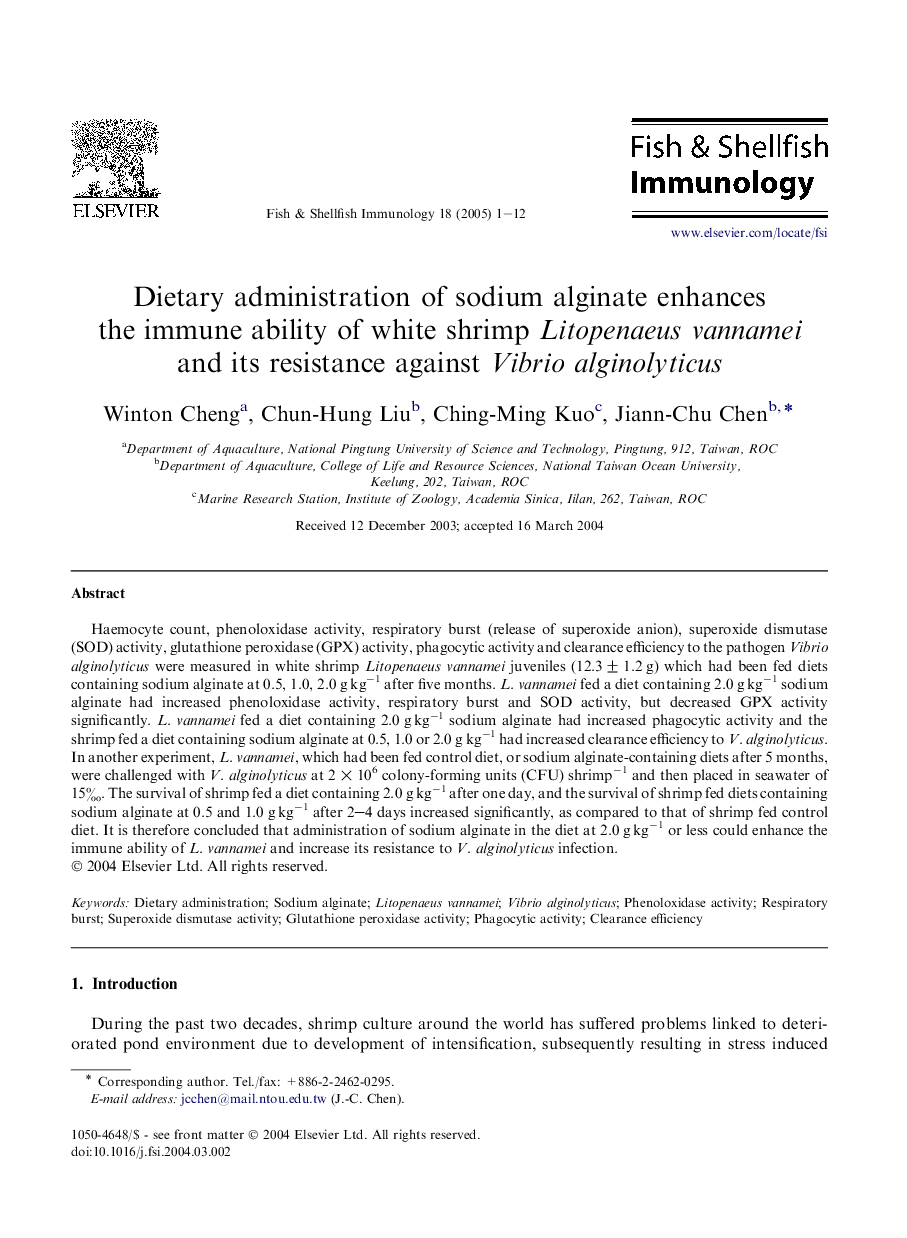| Article ID | Journal | Published Year | Pages | File Type |
|---|---|---|---|---|
| 8978750 | Fish & Shellfish Immunology | 2005 | 12 Pages |
Abstract
Haemocyte count, phenoloxidase activity, respiratory burst (release of superoxide anion), superoxide dismutase (SOD) activity, glutathione peroxidase (GPX) activity, phagocytic activity and clearance efficiency to the pathogen Vibrio alginolyticus were measured in white shrimp Litopenaeus vannamei juveniles (12.3 ± 1.2 g) which had been fed diets containing sodium alginate at 0.5, 1.0, 2.0 g kgâ1 after five months. L. vannamei fed a diet containing 2.0 g kgâ1 sodium alginate had increased phenoloxidase activity, respiratory burst and SOD activity, but decreased GPX activity significantly. L. vannamei fed a diet containing 2.0 g kgâ1 sodium alginate had increased phagocytic activity and the shrimp fed a diet containing sodium alginate at 0.5, 1.0 or 2.0 g kgâ1 had increased clearance efficiency to V. alginolyticus. In another experiment, L. vannamei, which had been fed control diet, or sodium alginate-containing diets after 5 months, were challenged with V. alginolyticus at 2 Ã 106 colony-forming units (CFU) shrimpâ1 and then placed in seawater of 15â°. The survival of shrimp fed a diet containing 2.0 g kgâ1 after one day, and the survival of shrimp fed diets containing sodium alginate at 0.5 and 1.0 g kgâ1 after 2-4 days increased significantly, as compared to that of shrimp fed control diet. It is therefore concluded that administration of sodium alginate in the diet at 2.0 g kgâ1 or less could enhance the immune ability of L. vannamei and increase its resistance to V. alginolyticus infection.
Keywords
Related Topics
Life Sciences
Agricultural and Biological Sciences
Aquatic Science
Authors
Winton Cheng, Chun-Hung Liu, Ching-Ming Kuo, Jiann-Chu Chen,
